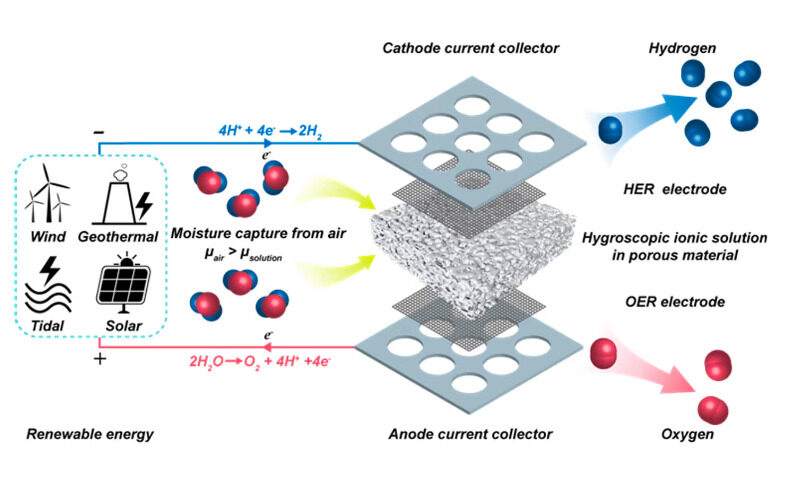Hydrogen from humidity: World first direct air electrolyser

A method that electrolyses hydrogen out of thin air, anywhere on Earth, without the need for any other water source has been developed and tested by researchers at Melbourne University.
The Direct Air Electrolyzer (DAE) absorbs and converts atmospheric moisture as low as 4% humidity. Decoupling hydrogen production from the need for a water supply may allow green hydrogen to be produced more or less anywhere you can ship it out from, said researchers.
Chemical engineers at Melbourne University said the electrolyser’s design is simple. It includes two flat plates acting as anode and cathode. Between the two plates is a porous material – either melamine sponge or sintered glass foam. This material is soaked in a hygroscopic ionic solution – a chemical that can absorb moisture from the air spontaneously.
Once connected to an energy source, expose it to the air, and hydrogen starts being released at the cathode, and oxygen at the anode.
After testing different liquids, materials, thicknesses and other parameters, researchers managed to get a faradaic efficiency of around 95%. Hooked up to a paperback-sized solar panel, the team found the DAE was able to generate 3.7m3 of high-purity hydrogen per day, per square meter (10.7ft3) of cathode.
The team said the next steps are to test the DAE in a range of harsh conditions and temperatures, and to scale up.
Dr. Kevin Gang Li, lead researcher, said: “We are in the process to scale up the DAE, from a five-layer stack to one meter square, then 10 meters and so on. And we can simulate a dry climate in lab, but that’s not a real desert. So, we want to take it to Alice Springs and spend a couple of weeks, see how it goes.”






